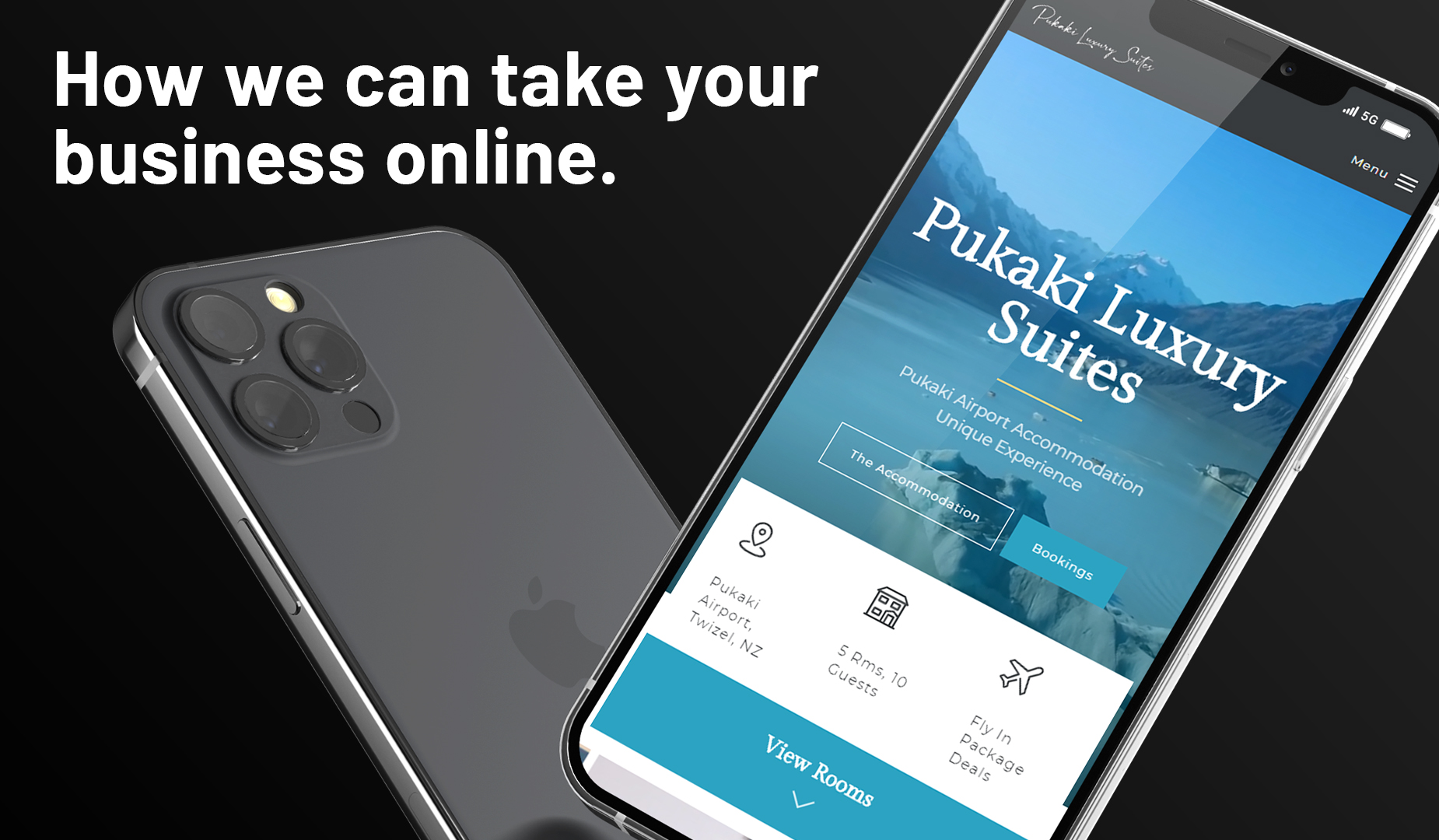
WHY DO YOU NEED A WEBSITE FOR YOUR SMALL BUSINESS?
Whether your small business is well-established, just starting out, or somewhere in between, having a dedicated website is a must.
Why is this such a necessity? Consider these statistics:
- Internet users spend an average of 6 hours and 42 minutes online every day.
- Nearly two-thirds of small businesses have websites.
- 81% of shoppers do online research before patronizing a business and 97% of consumers find local businesses and services through an online search.
- Within 24 hours, 88% of consumers who search for a business online patronize that business.
- Mobile e-commerce revenue accounted for 50% of all e-commerce revenue in 2018.
Essentially, consumers spend tons of time online, and much of their activity revolves around researching companies where they can spend their money. If you don’t have a website, your competitors do, which means that they are the ones your potential customers will find and support.
While creating a Facebook business page or Etsy store for your company may seem like a quick, low-cost solution to creating an online presence, these platforms don’t give you much control over your content and design, and are limited in their ability to reach an audience.
A website specifically designed for your small business, with its own domain name and email address, will help establish your credibility and raise your brand profile. While there are costs associated with building and hosting a small business website, the return on investment of a well-designed, informative website can be substantial.
Moving your small business from the brick-and-mortar space to the virtual realm may seem intimidating, but with the help of the expert team at SPF it has never been easier. Our step-by-step process will walk you through all the key points we take when creating the perfect website for your small business.
WHAT CAN SPF DO FOR YOU:
Before we begin to talk with you about a website we usually start with a meeting that helps us to form an overall marketing plan for your business. This will involve discussing your products/services, your target market, your ambitions for the website and of course the essence of what your business is about. This business overview helps us to collate a strong marketing plan that incorporates both the website, design elements and the future of your business on social media.
1. PLAN YOUR WEBSITE
Having some preliminary ideas about your website’s design and functionality before you get started will help you make foundational decisions about your website, and avoid headaches down the road.
During the initial planning stages of your website, here are some things to think about:
- Does your website need ecommerce functionality, or will it mainly be informational?
- What information do you seek when you visit a business’ website?
- What type of customer engagement tools do you need?
- What level of control do you want to have?
- What is your budget for this website, both in time and money?
Look at your competitors’ websites to get a sense of what customers expect when they visit a website for your type of business. Also, think about the websites that you visit frequently, and what you find engaging or useful about them.
2. PICK A PLATFORM
Once we have a general sense of what you want your website to do, we can help you decide how to actually build your website, and what platform would best suit your needs.
Shopify is a popular, e-commerce solution. It allows users to create customizable websites using a range of stylish templates and Apps. Creating a website with Shopify gives users the most control over their site’s look and functionality, but it does require some technical knowledge. For small businesses whose focus is on making sales Shopify makes managing, selling and displaying products a piece of cake. This user friendly platform is easy to use and once we have designed you something beautiful the task of managing and fulfilling orders, updating products and making small changes is something you will be able to do yourself.
3. CREATE RELEVANT CONTENT
Once you decide whether you’re going to use WordPress or Shopify or even Wix to run your website, the next step for us is to create your website.
We work closely with our clients throughout the design process to make sure we are hitting all the right notes when it comes to aesthetics and keeping line with your businesses identity:
- Home page: This is the first page visitors will see when they arrive at your site. We make sure this page is engaging, so visitors want to dig deeper, but also that includes the most relevant information, in case they have limited time.
- Products/Services: What are you selling? Whether it’s merchandise people can order online, or services people can schedule, we make sure that all the information is clear and concise. If you’re selling products through your website, we make sure it has e-commerce functions like inventory pages, a shopping cart, and payment processing.
- Contact information: Many people will visit your website to find out how to contact you. The easier this information is to find, the more likely customers will get in touch with you. This is also where you can give customers the option to share their contact information, which you can use for further engagement. We often create call to action links to take users exactly where they want to go with as few clicks as possible.
- About: This is where we tell your business’ story. Introducing your business by sharing your company’s mission, values, and history, and providing information about you and your team. A good about page will help create a connection with your audience making them more likely to purchase your products or book your services.
- Testimonials: We like to let past customers help you sell your company to potential customers by including reviews and testimonials.
- Blog: While not essential, a blog can be an easy way to keep your audience engaged, and drive website traffic by providing regular updates on what’s new at your business. This really depends how much time you are going to invest in the website once we have set it up. A good blog shared across your social platforms is a great way to connect with customers and make them feel involved in your business journey.
This is also where we get to flex your design muscles. While there are a variety of elements that go into designing a website, some of the key ones include logo and color scheme; layout; navigation; text; images and video, and mobile optimization. With a wealth of experience doing this for a wide range of clients we are confident we can create something that is unique and captures the heart and soul of your business.
4. OPTIMIZE YOUR WEBSITE FOR SEARCH ENGINES
Now that we have created a functional, published website, the next step is to make it as easy as possible for people to find it. Enter search engine optimization, or SEO.
Search engine optimization is the process of refining your website’s content to get higher search engine rankings and therefore drive visitors to your website, without paying for search engine placement. This is important because it will help your website appear higher on search engine results pages (SERPs), thereby increasing the likelihood that new visitors will find your site.
All search engines use bots to scan, analyze, and index website content and determine where websites will appear on SERPs. While different search engines may have slightly different criteria, they generally all look at the same key elements. Therefore, there are few steps we can take to make sure your website is SEO-friendly:
- Relevant page content: We make sure your website has content that answers your customers’ most popular queries.
- Keywords: We do the research to find the words and phrases people most commonly use when searching online for your type of business or service, and include these keywords in the text on your site.
- Meta tags: This element helps search engines find your website’s metadata, or information embedded in your site’s HTML code. Metadata helps search engine’s understand what your website is offering, and therefore how to include it in SERPs.
- Website navigation and sitemap: Search engine bots need to navigate your website to find relevant information, so easier navigation can equal better search result rankings. Bots will also scan your sitemap, which is essentially a directory of all the pages on your website, for relevant content.
- Link building: Linking to other pages within your website (internal links) as well as getting reputable, external websites to link your content (backlinks) also boosts your search rankings.
- In addition to keeping website visitors engaged, images can also help with your SEO. It takes a few extra steps to optimize your images, but it can be worth it to increase your place on SERPs.
5. DRIVE TRAFFIC TO YOUR SITE
The most successful businesses use a multi-pronged approach to get as many eyes on their site as possible, including the following methods:
- Social media: Whether you already had social media accounts for your business before we created your website, or are planning on launching them both simultaneously, we connect everything for maximum visibility. Linking to your website from your social media pages enables users to easily access your site, while letting your website visitors follow you on social media directly from your site increases your engagement and raises your social media profile.
- Offer promotions: Give people an extra incentive to visit your website, whether it’s with a coupon that can only be redeemed online or a product that is exclusively sold on your site. We can help you get to grips with this process so you can run sales whenever you want.
- Send emails and newsletters: Email marketing is important for small businesses because it builds trust, increases engagement, and yes, drives website traffic. Use emails to promote new products or content, and offer exclusive deals to online shoppers. We are certified Mailchimp experts and can help connect you get the right content to the right people with targeted EDM's.
- Post search-worthy content: With a subscription to SPF we can keep your website fresh and engaging by frequently adding new content that will give new customers a reason to check it out, and current customers a reason to return. We can also boost your SEO by having other websites backlink to your site.
- Leverage blogs: A blog is a great way to create new, relevant content for your website. Include snippets of your blogs on your social media accounts, and direct readers back to your website for the full post.
6. MAINTAIN AND IMPROVE YOUR WEBSITE
Even after the initial work of getting your small business online is done, you shouldn’t shut off your computer and forget about your website. Regular refreshes and updates will ensure that customers stay engaged, and that your site will rank higher on SERPs, which in turns means you will attract more potential customers. If you would like to know more about a flexible subscription with SPF please feel free to get in touch.
We can track your website’s performance with tools like Google Analytics to help you understand what your website is doing well, and where there is room for improvement. As we identify new uses for your website, we can add new pages and features, so your website continues to grow along with your business.
We highly recommend Digital.com this is a fantastic source of information for small businesses looking for information to help them run their websites or learn new skills to expand their online presence. You can visit Digital.com via the button below.
